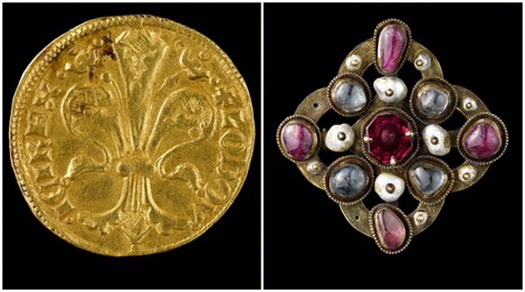
Stunning Finds from Met’s Exhibit on Medieval Jewish Treasure
There are few remnants of the once flourishing Jewish community of the town of Colmar, in France.
Jews were blamed for the outbreak of the Black Death plague there in 1348-49, and many were burned to death. A Roman emperor who then controlled the area later seized their assets.
But a few pieces of jewelry that testify to Jewish life in the town miraculously survived after being hidden in the walls of a house during the 14th century and remaining stashed there for more than 500 years.
The items, which were discovered in 1863, all belonged to an unknown family. Some are now on view at the Met Cloisters museum, part of New York’s Metropolitan Museum of Art.
As part of the exhibit, the items will be displayed alongside related artifacts from the Cloisters Collection, the Jewish Theological Seminary and Colmar’s public library. The exhibit opened Monday and will run through Jan. 12.
Here are a few of the items from the exhibit that hold more than a little history.

A Jewish ceremonial wedding ring, inscribed “mazel tov,” made of gold and enamel, from the Colmar Treasure, circa 1300-1347. (Musée de Cluny – Musée national du Moyen Âge, RMN-Grand Palais/Art Resource, NY via Metropolitan Museum of Art)

At left, a gold coin of Louis of Hungary, 1342-53; at right, a jeweled silver brooch, second quarter of 14th century, both from the Colmar Treasure. (Musée de Cluny – Musée national du Moyen Âge, RMN-Grand Palais/Art Resource, NY via Metropolitan Museum of Art)












